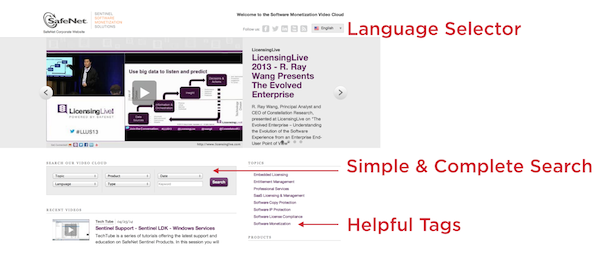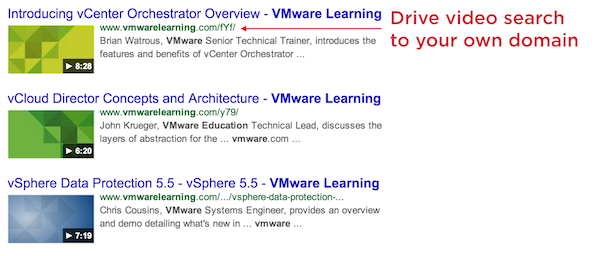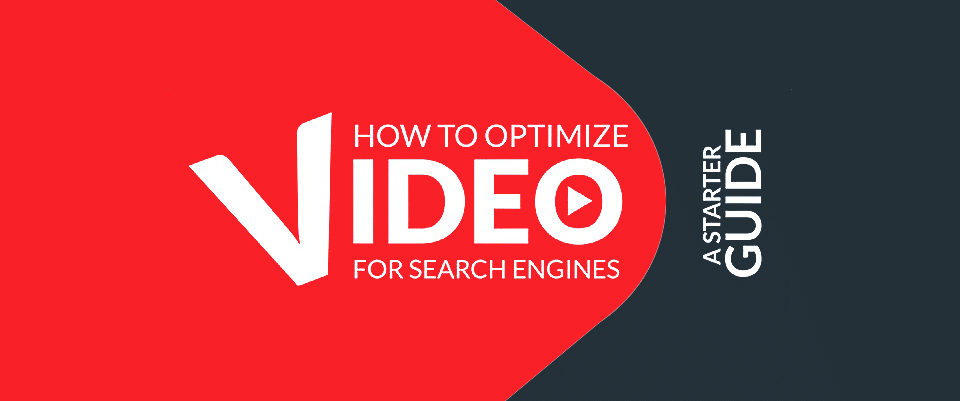Recently, Purna Virji wrote a refreshing piece on the right way to think
Recently, Purna Virji wrote a refreshing piece about SEO in the right way. In short, forget about silver tablets and focus on quality.
Expanding her approach, focus on video SEO and talk about how you can affect your ranking.
Many of the points below have come from several marketers in recent weeks who have been working at the intersection of video marketing and SEO for some time. What impressed me the most was that, like Virji, these people were incredibly short about video SEO, offering best practices and bright ideas based on a long-term approach, the quality of SEO videos.
As you plan or review your video SEO strategy, these 10 points should be a checklist for you.
Always Be Providing Value
There is no point in not giving a great experience when the public comes. The initial few spots on the SEO video checklist are about demonstrating your value to the audience, not the robot.
1. Use Video to Solve Problems & Provide New Information
For your video to rank well for your search terms, you need to deliver great content that solves issues or provides further information. The good news is that excellent materials are generally not difficult or expensive to produce.
This can be as simple as filming a blackboard meeting or sitting in for a short interview with one of your specialists. Ask yourself: What issues or obstacles do my audience regularly encounter? How can I show someone how to achieve my goal faster / better / cheaper?
2. Make Videos Easy to Browse & Link to Individual Video Playback Pages
Group your videos and create an easy-to-use video resource centre where your audience can easily find your content.
Set up your portal or video gallery with categories and tags to make it easy to find precisely what you’re looking for and navigate between videos.
Avoid an endless stream of single-page video players. If you have ever found a wall of YouTube videos embedded on someone’s site, you will understand that it is difficult to find what you want.
Instead, make sure you have a separate landing page for each video so that the search engine can find and index each video property. You’ve invested in your video content, so don’t let the lousy video experience go away.

3. Use Interactive Video Elements to Connect With Viewers
Everyone who watches for each video is likely to call that person or guide them to the next logical step.
Interactive video elements such as video links, questionnaires, surveys, and forms allow you to manipulate your audience into crucial moments and take action.
For example, if you’re making a video about how to build an app, use video interactivity to connect your viewer directly to the point in your app where they can do what they’ve just learned.
Nail the Nuts & Bolts
The fun thing about best practices is that they last longer! Follow the basics and adopt common sense when it comes to the technical side of video SEO.
4. Be Smart & Relevant About Metadata
To get the most out of her video resource library. For SafeNet, video is a way to search for valuable long-tailed keywords that you might not otherwise capture.
Also, be sure to add hidden tags to the HTML code of your video landing pages, precisely Facebook’s OpenGraph stamp, Schema. Microdata tags and even the occasional Twitter card tag.
5. Use Transcriptions for Indexing, Usability & Content
Scripts can have a significant impact on your search rankings. In the same webinar, Lewis presented the results of a quick test with some SafeNet videos. The goal was to see if a transcript could take a video that did not rank and was received on the ranking. The answer was yes.
In just three weeks, the selected videos were ranked on the front page (Bing and Yahoo). We continue to reveal these videos.
To unlock content in your videos, add videotape directly to the HTML of each page where your videos are hosted. Gives your viewers the option to “read” a video if they cannot listen in time. A search engine needs a wealth of keywords.
Transcriptions are also very useful for creating additional content from your videos. For example, you can use a transcript as the basis for a blog post that links back to your video resource site.
6. Host Your Videos on Your Own Domain
If there is one thing to get more SEO value from your videos, it will host them on your domain. YouTube and Vimeo have their locations (we’ll get to that below), but you need to host your videos on your site.
You want to use an online video platform to create a video sitemap on a subdomain on your site. If you use YouTube or any other video player to embed videos on your website, give full credit to your content.

7. Make Sure You Have a Video Sitemap
To nest SEO video nuts and bolts, you need to be covered with a video sitemap configured by default.
Each entry in the video sitemap should include a link to the landing page for the video, hence the value of the video resource site or video gallery.
Metadata is optional but recommended.
Check out an online video platform that automates your video sitemap so that you don’t have to worry about it all the time.
Be a Smart Social Butterfly
In terms of content, UX and infrastructure, social have its place in video SEO. The last two points aim to maximize socialization, creating multiple ways to get back to your site.
8. Use YouTube to Preview High-Value Content, Drive Traffic Back to Your Own Site
YouTube is a great place to find content from your new people. This is an awareness channel that should be part of your marketing mix; however, you should see YouTube as a mandatory provision. This is a quick stop on the way to your final destination – a video gallery hosted on your domain.
A great way to use YouTube for all your awareness while contributing to your SEO videos is to create short video previews. for your content and use YouTube annotations to place in-video CTAs that drive viewers Do it Return to the site’s own video resource library. , Hosted on its domain.
Consider your preview of another piece of content. Use a title and a summary and maybe change the thumbnail as well.
From the audience’s point of view, what do they need to see to be motivated to click? This avoids the problem of duplicate content, creating a good user experience.
9. Allow Others to Embed Your Videos
Let others incorporate content into their work as you make great videos. By making it easier for others to embed your videos on your site, you increase the likelihood of more inbound links to your website – clearly an SEO benefit.
10. Measure How Keywords Impact the Bottom Line
When you plan your video SEO strategy, don’t forget to implement a tracking system to capture the success of your new policy.
Sometimes tracking is created in your video platform or analytics software, other times it is a custom code that engineering or IT will create, but you should always report the number of people who reached the top. Funnels through social or search networks. Contact through content strategy until closing.
This brings us to the end of the 10-point checklist for real video SEO strategy. Will you add anything to the list? What has worked for you in the past?
(source : searchenginewatch.com seo tips)



